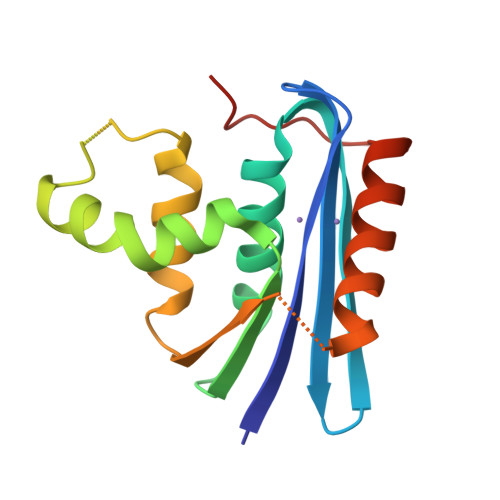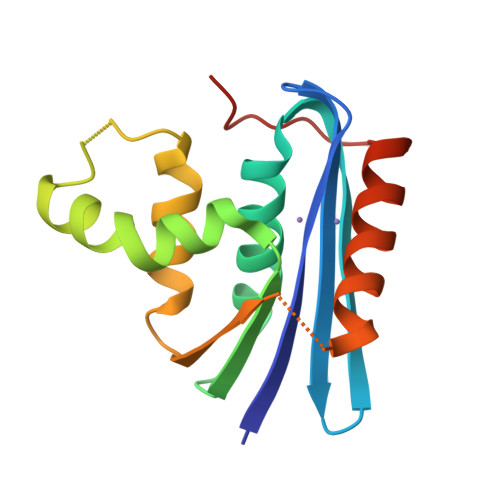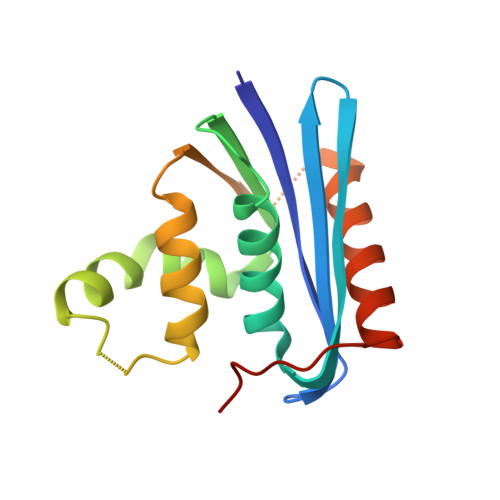Co-crystal of Escherichia coli RNase HI with Mn2+ ions reveals two divalent metals bound in the active site.
Goedken, E.R., Marqusee, S.(2001) J Biological Chem 276: 7266-7271
- PubMed: 11083878
- DOI: https://doi.org/10.1074/jbc.M009626200
- Primary Citation of Related Structures:
1G15 - PubMed Abstract:
Ribonuclease H (RNase H) selectively degrades the RNA strand of RNA.DNA hybrids in a divalent cation-dependent manner. Previous structural studies revealed a single Mg(2+) ion-binding site in Escherichia coli RNase HI. In the crystal structure of the related RNase H domain of human immunodeficiency virus reverse transcriptase, however, two Mn(2+) ions were observed suggesting a different mode of metal binding. E. coli RNase HI shows catalytic activity in the presence of Mg(2+) or Mn(2+) ions, but these two metals show strikingly different optimal concentrations. Mg(2+) ions are required in millimolar concentrations, but Mn(2+) ions are only required in micromolar quantities. Based upon the metal dependence of E. coli RNase HI activity, we proposed an activation/attenuation model in which one metal is required for catalysis, and binding of a second metal is inhibitory. We have now solved the co-crystal structure of E. coli RNase HI with Mn(2+) ions at 1.9-A resolution. Two octahedrally coordinated Mn(2+) ions are seen to bind to the enzyme-active site. Residues Asp-10, Glu-48, and Asp-70 make direct (inner sphere) coordination contacts to the first (activating) metal, whereas residues Asp-10 and Asp-134 make direct contacts to the second (attenuating) metal. This structure is consistent with biochemical evidence suggesting that two metal ions may bind RNase H but liganding a second ion inhibits RNase H activity.
Organizational Affiliation:
Department of Molecular and Cell Biology, University of California, Berkeley 94720, USA.

















